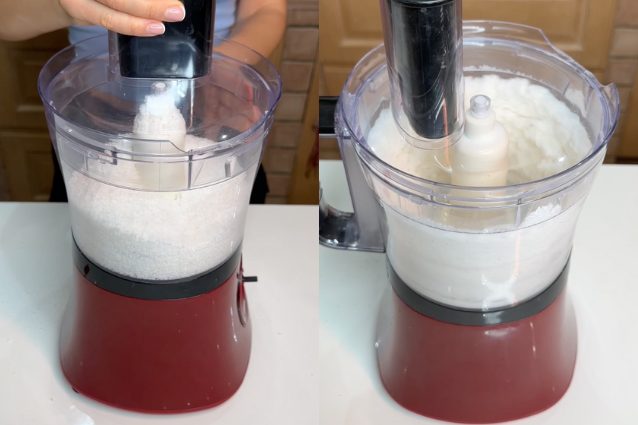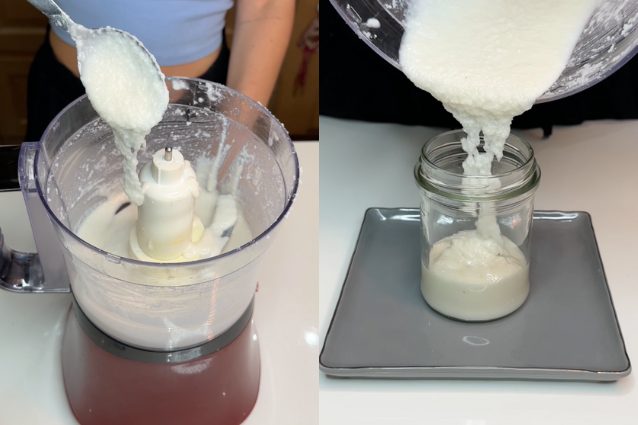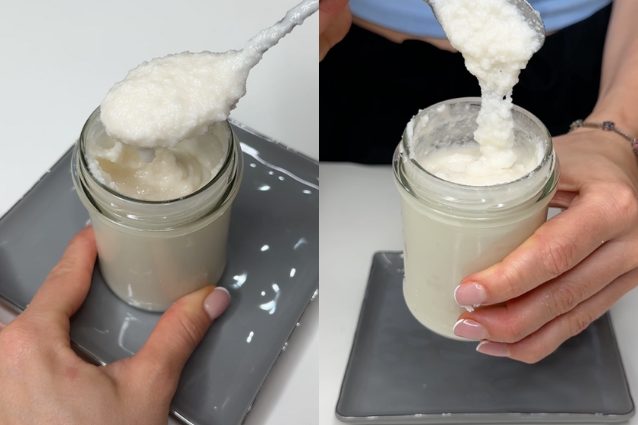
1-Ingredient Coconut Butter is a luxurious and versatile treat that’s sure to become a staple in your kitchen. With its rich, creamy texture and natural sweetness, this homemade spread is perfect for anyone who loves the tropical flavor of coconut. Whether enjoyed on toast, blended into smoothies, or used as a base for decadent spreadable creams, coconut butter brings a touch of indulgence to everyday moments. What makes it truly special is its simplicity—just one ingredient, yet the result is a buttery, smooth delight that’s as delicious as it is wholesome. Once you’ve tried making your own, you’ll understand why this luscious spread is a favorite among food enthusiasts.
What is Coconut Butter?
Coconut butter, though it has gained popularity in recent years as a health-conscious and gourmet ingredient, has its roots in the tropical regions where coconuts have been a dietary staple for centuries. The process of turning coconut into a rich, creamy butter is believed to have been inspired by traditional methods of extracting coconut oil and cream in Southeast Asia, the Pacific Islands, and parts of South America. Indigenous communities in these regions have long utilized every part of the coconut, crafting everything from coconut milk to oil, and eventually, coconut butter. While coconut butter as we know it today may be a relatively modern innovation, it draws upon these age-old practices of harnessing the coconut’s natural richness and flavor. As global interest in plant-based and natural foods has grown, coconut butter has found its place in kitchens worldwide, celebrated for its purity, versatility, and deep connection to its tropical origins.
Tips for The Best Coconut Butter
- The key to smooth, creamy coconut butter is a high-powered appliance. The more powerful your food processor, the faster the coconut will turn into butter. If your food processor isn’t very strong, it may take longer, and you’ll need to be patient.
- Making coconut butter can take anywhere from 10 to 20 minutes, depending on your equipment. Don’t rush the process—let the food processor do its work. If the coconut sticks to the sides, stop occasionally to scrape it back down into the middle to ensure an even blend.
- While blending, it’s a good idea to stop every few minutes to give your food processor a break and avoid overheating. This also allows you to scrape down the sides and ensure all the coconut is evenly processed.
Coconut Butter vs. Coconut Oil
Coconut oil and coconut butter, while both derived from coconuts, are quite different in texture and use. Coconut oil is extracted from the meat of the coconut and is pure fat, remaining liquid at warm temperatures and solidifying when cool. Coconut butter, on the other hand, is made by blending the whole coconut meat into a thick, creamy spread that includes both the oil and the fiber.
Because of these differences, they are not always interchangeable. Coconut oil is ideal for cooking, frying, and baking due to its high smoke point, while coconut butter is better suited for spreading, adding to smoothies, or using in recipes where its rich, full-bodied texture and coconut flavor can shine. In some cases, you might substitute coconut oil for butter in recipes, but the reverse isn’t always true, as coconut butter’s thicker consistency can affect the texture of the final dish.
How Can I Use Coconut Butter?
Coconut butter can be used in the kitchen as a spread on toast, a base for smoothies, or stirred into oatmeal for a creamy, coconutty flavor. It's also great in baking, where it can be used in place of dairy butter to add richness and a subtle coconut taste to cookies, cakes, and energy bars. Additionally, you can melt it over roasted vegetables, drizzle it on pancakes, or even use it to make decadent coconut-based sauces and frostings.
Can I Use Sweetened Grated Coconut Instead?
It's best to use unsweetened coconut to make coconut butter. Sweetened coconut contains added sugars and moisture, which can affect the consistency and flavor of the butter. Unsweetened coconut will blend more smoothly and provide the pure, natural taste that makes coconut butter so versatile and delicious.
Can I Add Some Flavorings?
Once you’ve mastered the basic coconut butter, feel free to get creative. You can add white chocolate for a sweet, indulgent spread, or blend in nuts like cashews for a deliciously nutty twist. Just make sure to add these extras after the coconut has already turned into butter for the smoothest texture.
What if I Don't Have a Food Processor?
If you don't have a food processor, you can use a high-powered blender to make coconut butter. Just be prepared to blend in small batches and scrape down the sides frequently to ensure even processing. If your blender isn't powerful enough, you might not achieve the same smooth, creamy consistency, but with patience, you can still get good results.
Why is My Butter Not Getting Creamy?
If your coconut butter isn't creamy, it’s likely due to insufficient blending or the use of low-quality, dried-out coconut. A powerful blender or food processor is key to breaking down the coconut into a smooth butter. If your coconut is too dry or your equipment isn't strong enough, the butter may turn out gritty or chunky instead of creamy. Ensure you blend long enough and use fresh, unsweetened coconut for the best results.
Is Coconut Butter Healthy?
Yes, coconut butter is considered healthy in moderation. It contains healthy fats, fiber, and nutrients from the whole coconut, including lauric acid, which supports immune health. However, because it’s calorie-dense, it's best enjoyed in small amounts as part of a balanced diet. While it provides beneficial fats, it should be consumed alongside other nutrient-rich foods for overall health.
Can I Freeze Coconut Butter?
Yes! To do so, store it in an airtight container to prevent freezer burn. When you're ready to use it, let it thaw at room temperature or gently warm it to restore its creamy texture. Freezing coconut butter is a great way to extend its shelf life, especially if you’ve made a large batch.
How to Store 1-Ingredient Coconut Butter
Store coconut butter in a tightly sealed jar at room temperature or in the refrigerator. If stored properly, it can last for several months. At room temperature, it may separate or solidify; simply warm it gently and stir to restore its creamy texture. Refrigeration can extend its shelf life, but it may harden, so allow it to soften before use.
Ingredients
How to Make 1-Ingredient Coconut Butter
;Resize,width=712;)
Pour the unsweetened grated coconut into the food processor and start blending at maximum powder, for at least 10 minutes, until the coconut starts to turn liquid.
Pour the unsweetened grated coconut into the food processor and start blending at maximum powder, for at least 10 minutes, until the coconut starts to turn liquid.
;Resize,width=712;)
Once it has reached the desired consistency, pour it into a glass jar.
Once it has reached the desired consistency, pour it into a glass jar.
;Resize,width=712;)
Your coconut butter is ready to be enjoyed!
Your coconut butter is ready to be enjoyed!

;Resize,width=767;)
